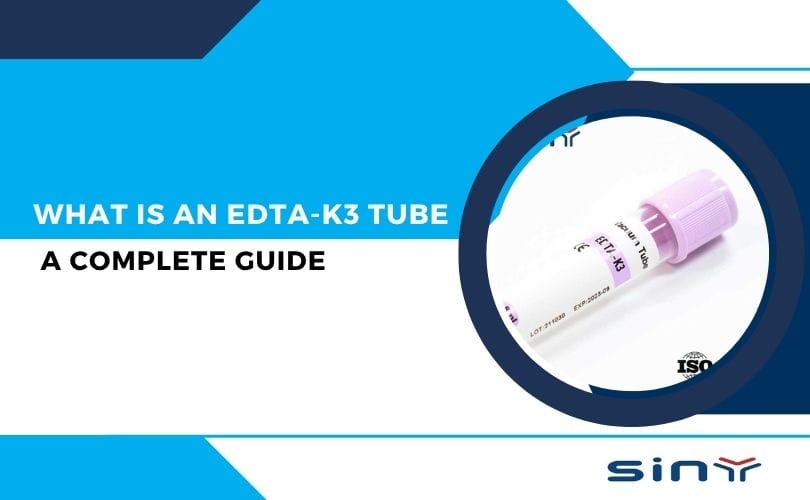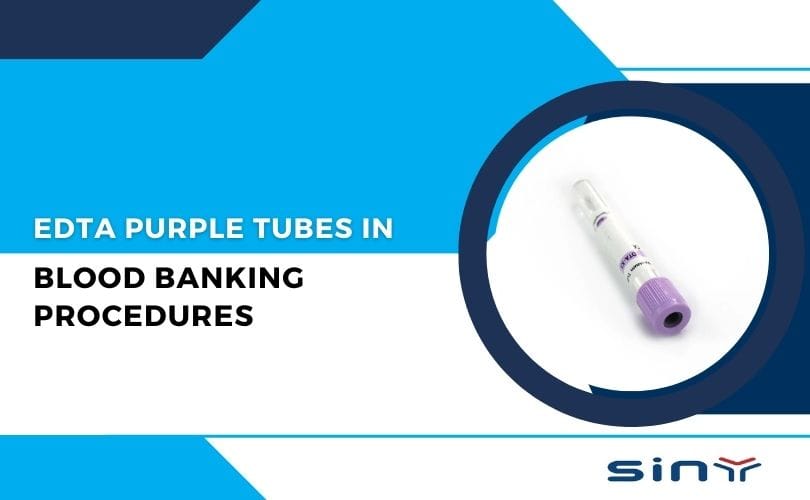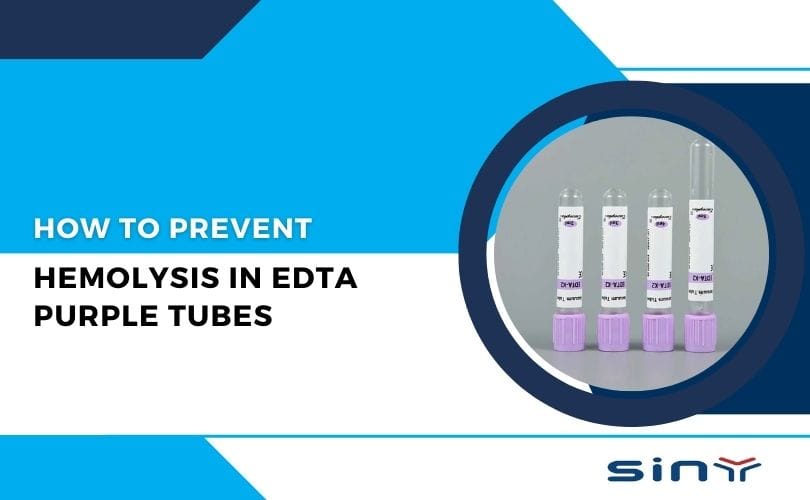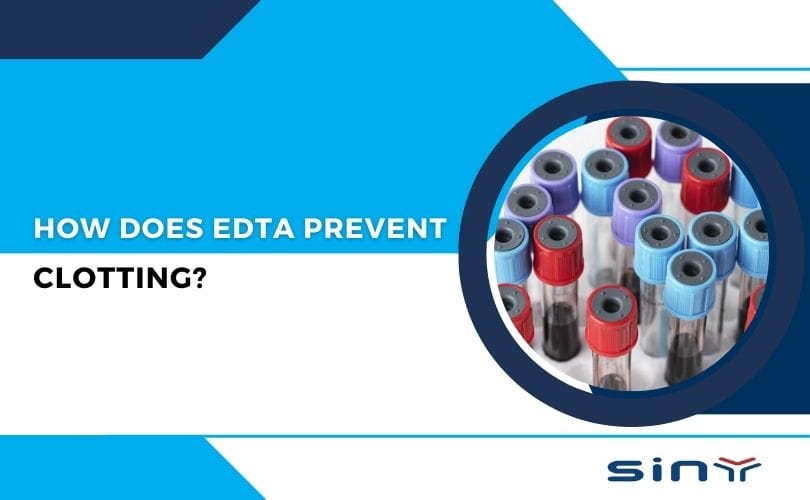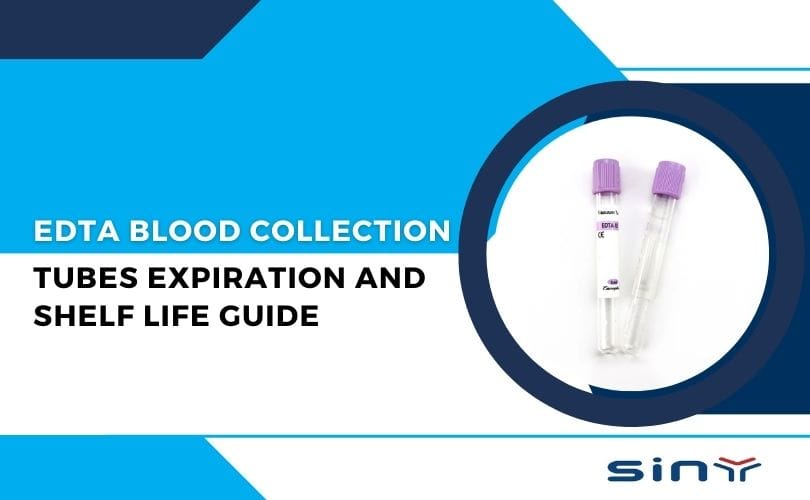EDTA-K3 tubes play a crucial role in ensuring accurate blood test results. Since their introduction in the 1960s, these tubes have become the gold standard for hematological testing due to their superior anticoagulant properties.
EDTA-K3, or Ethylenediaminetetraacetic Acid Tripotassium Salt, is a specialized form of EDTA that effectively prevents blood clotting while preserving cell integrity. This makes it ideal for Complete Blood Count (CBC), molecular diagnostics, and immunophenotyping.
What is an EDTA-K3 Tube?
An EDTA-K3 tube is a vacuum blood collection tube coated with tripotassium EDTA as an anticoagulant. This formulation prevents blood from clotting by binding calcium ions—a vital player in the blood clotting process.
How does it work? EDTA contains multiple carboxyl groups that bond tightly to calcium (Ca²⁺) in the blood. By removing calcium, it effectively stops the clotting cascade at its root.
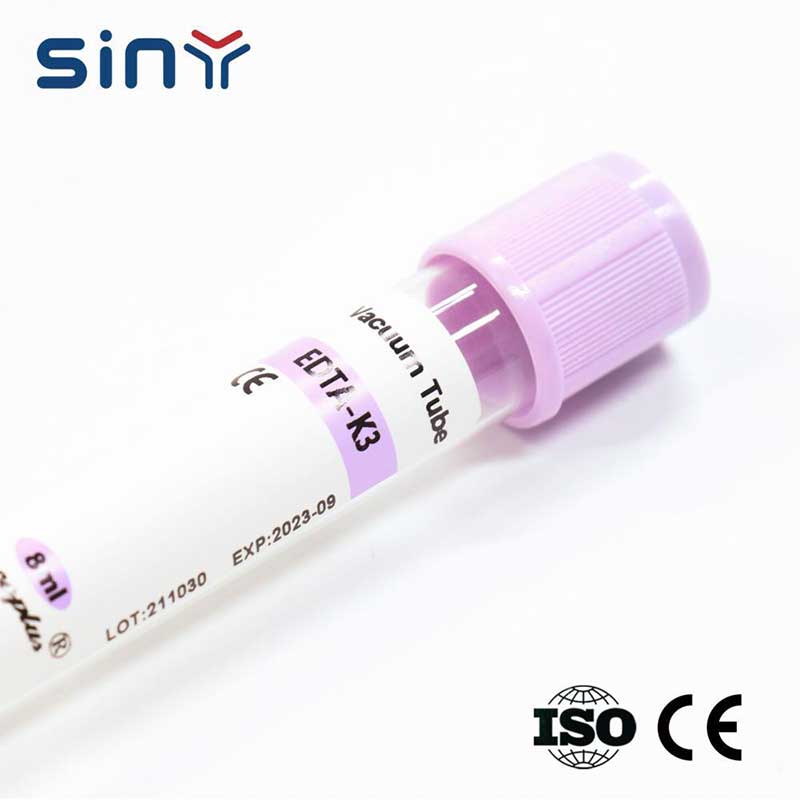
Compared to other anticoagulants like sodium citrate or heparin, EDTA has:
Longer-lasting anticoagulation
Better preservation of blood cell structure
Minimal distortion of cell membranes
Labs often prefer EDTA-K3 because of its strong performance in automated hematology analyzers and molecular testing workflows.
How does EDTA 3 work and Uses
Each EDTA·3K molecule carries four carboxyl groups. Those groups bind Ca²⁺ ions in a 1:1 ratio, which quickly lowers free calcium in the sample and stops prothrombin from converting into thrombin. Without thrombin, the clotting cascade cannot proceed. Compared with citrate, EDTA binds calcium more strongly and lasts longer. Compared with heparin, it affects platelet function more gently and leaves red cell membranes intact. This action keeps cells intact and delivers reliable lab results.
EDTA-3 Uses
- Complete Blood Count (CBC): Labs draw blood into EDTA-K3 tubes to measure red cells, white cells, platelets, hemoglobin, and cell distribution width.
- Morphology Exams: Technologists prepare peripheral blood smears from EDTA-K3 samples to study cell structure for anemia, leukemia, and other blood disorders.
- Molecular Testing: Labs extract DNA/RNA from EDTA-K3 blood for PCR, FISH, and next-generation sequencing, meeting strict demands for sample quality.
- Immunophenotyping: Flow cytometry relies on EDTA-K3 tubes to preserve cell surface markers and measure immune cell subtypes accurately.
- Sample Transport: EDTA-K3 tubes keep samples stable for 6–8 hours at room temperature (15–25 °C) or under refrigeration (2–8 °C), making remote testing and multicenter studies possible.
How to Use EDTA-K3 Tubes: Best Practices
- Check Labels: Verify tube labels match your test orders to prevent mix-ups.
- Order of Draw: Collect EDTA-K3 tubes after citrate tubes (for coagulation) and before heparin tubes (for chemistry) to avoid cross-contamination.
- Mix Gently: Invert the tube 8–10 times right after collection. Do not shake it hard, as that can break red cells.
- Store Correctly: Keep samples at room temperature or 2–8 °C. Never freeze them or expose them to direct sunlight or wide temperature swings.
- Test Promptly: Run CBCs within 6 hours of collection. If you must delay, refrigerate at 4 °C and test within 12 hours.
- Dispose Safely: Treat used tubes as biohazard waste. Follow local guidelines to prevent infection risks and environmental harm.
For high-quality EDTA-K3 tubes, explore our K3 EDTA Blood Collection Tubes.
Applications of EDTA-K3 Tubes
Let’s talk about where the magic happens. EDTA-K3 tubes aren’t a one-trick pony—they’re used across multiple lab settings:
1. Complete Blood Count (CBC):
The most common application. The EDTA-K3 tube helps labs analyze red blood cells, white cells, platelets, hemoglobin levels, and more with precision.
2. Peripheral Blood Smears:
For diagnosing anemia, malaria, or leukemia, these smears are made using blood from EDTA-K3 tubes because they maintain cellular integrity.
3. Molecular Diagnostics:
Want to extract DNA or RNA? EDTA-K3 tubes are your best bet. They keep nucleic acids intact for PCR, FISH, and even next-gen sequencing.
4. Flow Cytometry:
To analyze immune cell markers and subpopulations, immunophenotyping requires that cell membranes and proteins stay untouched. EDTA-K3 makes this possible.
5. Sample Transport & Storage:
EDTA-K3 keeps blood samples stable for 6–8 hours at room temp and even longer under refrigeration. This makes them great for remote sites and centralized labs.
Looking for bulk supplies? Here are some trusted options:
👉 EDTA Tubes for Blood Collection – sinymedical.com
👉 EDTA Tube Product Line – sinymedical.com
Advantages of EDTA-K3 Tubes
No fluff here—just solid benefits:
✅ Immediate Anticoagulation:
It works almost instantly, stopping the clotting process dead in its tracks.
✅ Excellent Cell Preservation:
Red cells, white cells, and platelets stay true to their original form.
✅ Broad Compatibility:
Works with most automated analyzers and supports multiple testing types.
✅ Trusted Worldwide:
Recognized by the CLSI GP41 guidelines and preferred in hospitals across continents.
✅ Cost-Effective & Scalable:
You’ll find large hospitals and small labs alike using EDTA-K3 tubes for reliability and affordability.
Limitations to Keep in Mind
Of course, no product is perfect. Here are a few things to be cautious about:
⚠️ Not for Coagulation Studies:
Since EDTA removes calcium, it can’t be used for PT/INR or aPTT tests.
⚠️ Excess EDTA Can Skew Results:
Too much anticoagulant or improper mixing may change cell morphology or create microclots.
⚠️ Interferes with Metal Testing:
Chelation affects analysis of metal ions like zinc, magnesium, or iron.
FAQs
What’s the difference between EDTA-K2 and EDTA-K3 tubes?
Both are effective anticoagulants. K2 uses dipotassium salt, while K3 uses tripotassium salt. K3 has better solubility and adheres well to tube walls, making it ideal for automated analyzers.
What happens if I don’t mix the blood after collection?
A: The anticoagulant won’t distribute properly. This leads to clotting, inaccurate cell counts, and instrument errors.
Can I run tests 12+ hours after collection?
Ideally no. After 6 hours, cell structures begin to degrade. You may still run some tests within 12 hours if refrigerated, but accuracy may suffer.
Can EDTA-K3 be used for functional immune cell testing?
Not really. EDTA inhibits calcium, which is needed for cell signaling. While surface marker detection is fine, functional assays require alternative tubes.
What should a good blood sample look like?
It should be uniformly red, with no visible clots or air bubbles. If your machine’s QC passes, you’re good to go.
Wrapping It All Up
The EDTA-K3 tube isn’t just another plastic tube—it’s a critical component of modern blood diagnostics. Its fast and complete anticoagulation, ability to preserve cellular structures, and compatibility with high-tech analyzers make it a true MVP in clinical labs.
From routine CBCs to advanced genomic research, the EDTA-K3 tube plays a role in safeguarding the integrity of your blood samples—ensuring results that healthcare providers can trust.
Looking to purchase or learn more? Don’t miss these resources:
🌐 Visit EDTA Tube’s Official Website
🛒 Buy EDTA Tubes for Blood Collection
📦 Explore K3 EDTA Tube Products
📹 Watch Siny Medical on YouTube
🇨🇳 Siny Medical’s Manufacturing Profile

